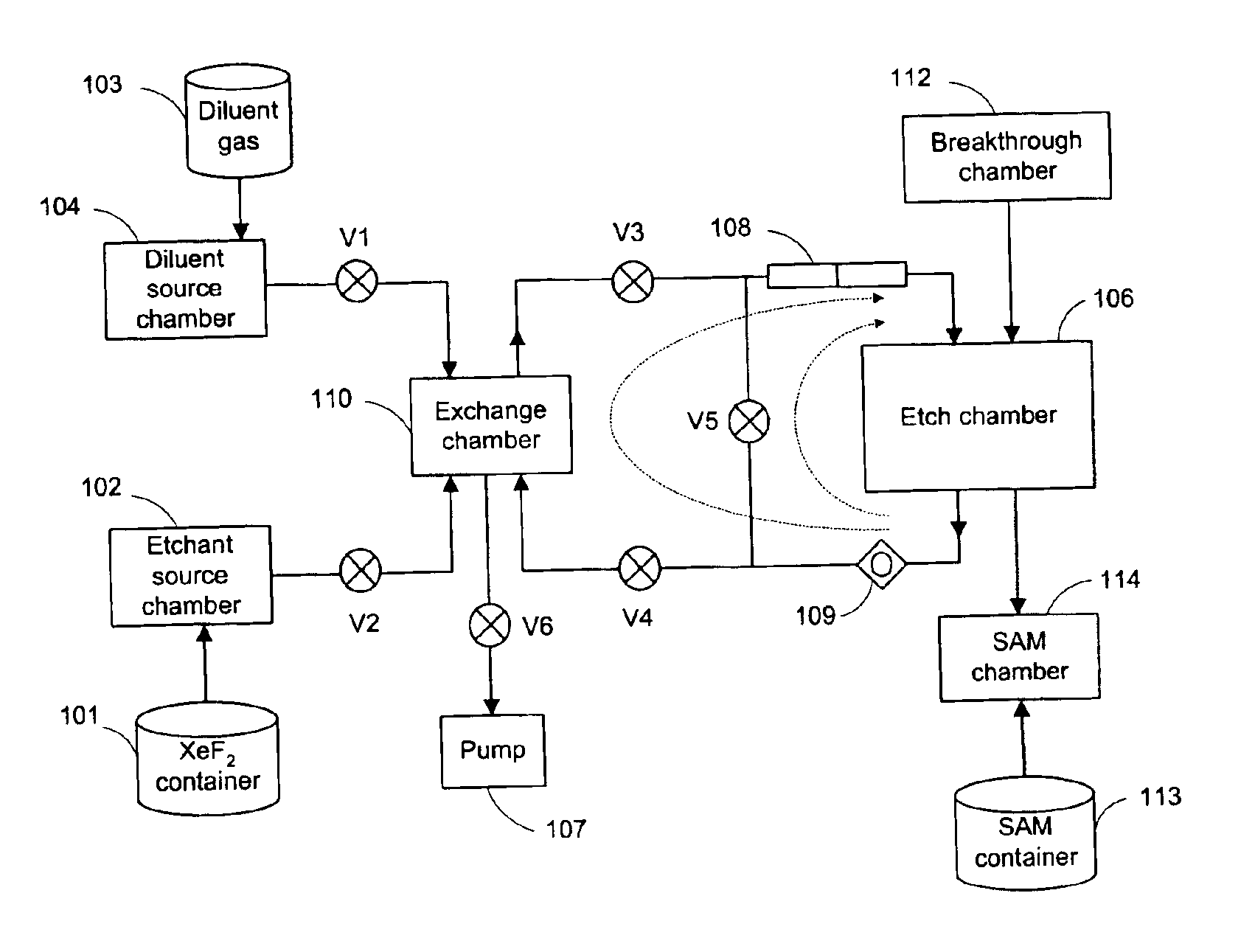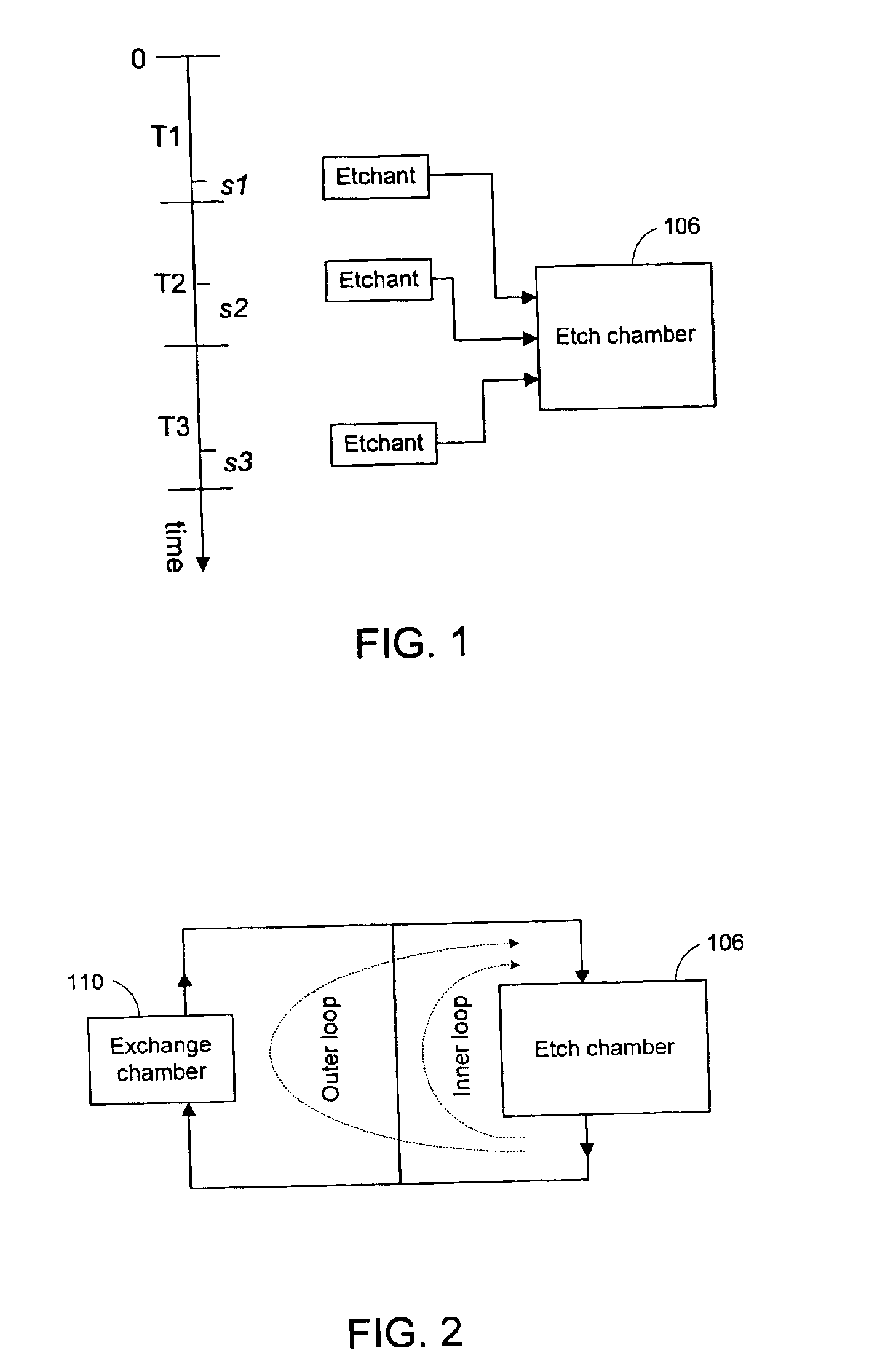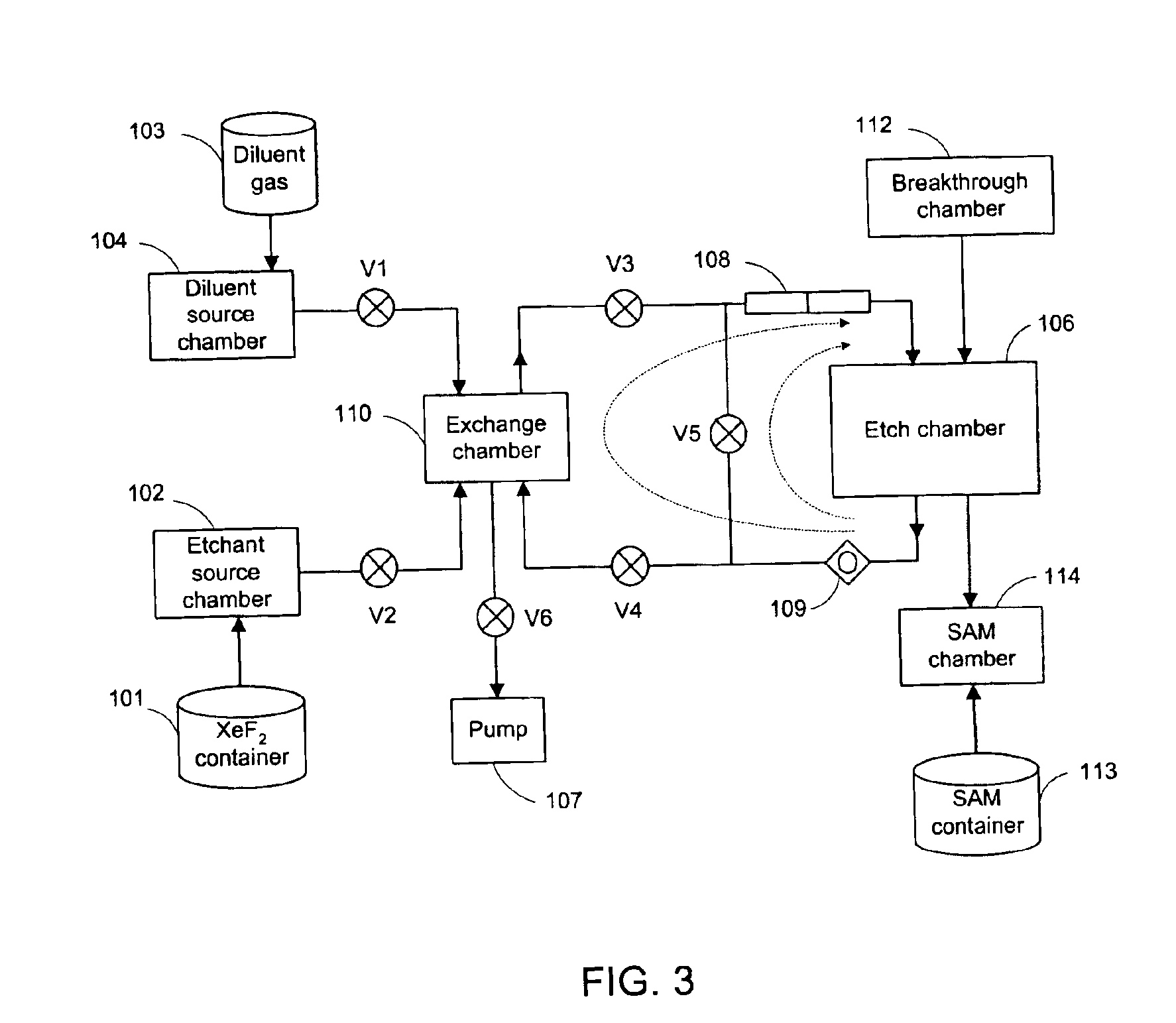Etching method in fabrications of microstructures
a technology of microstructures and etching methods, which is applied in the direction of semiconductor/solid-state device testing/measurement, separation processes, instruments, etc., can solve the problems of inefficient use of etching, difficult control of etching process, and unfavorable etching process
- Summary
- Abstract
- Description
- Claims
- Application Information
AI Technical Summary
Problems solved by technology
Method used
Image
Examples
Embodiment Construction
[0017]The present invention teaches a method for removing sacrificial materials in fabrications of microstructures using one or more selected spontaneous vapor phase etchants. The etchant is fed into the etch chamber during a feeding cycle of a sequence of feeding cycles until the sacrificial material of the microstructure is consumed by the chemical reaction between the etchant and the sacrificial material.
[0018]Referring to FIG. 1, three consecutive feeding cycles T1, T2, and T3 of a sequence of feeding cycles are illustrated along a timeline. Though preferably the same, the time intervals of these feeding cycles (e.g. T1, T2 and T3) are not necessarily the same. During a time slot within each feeding cycle, an amount of selected spontaneous vapor phase etchant recipe is fed into etch chamber 106 that contains the microstructure to be etched. The selected etchant recipe may be only a selected spontaneous vapor phase etchant, such as noble gas halide (e.g. XeF2) or interhalogen (e....
PUM
| Property | Measurement | Unit |
|---|---|---|
| total time | aaaaa | aaaaa |
| time | aaaaa | aaaaa |
| time | aaaaa | aaaaa |
Abstract
Description
Claims
Application Information
 Login to View More
Login to View More - R&D
- Intellectual Property
- Life Sciences
- Materials
- Tech Scout
- Unparalleled Data Quality
- Higher Quality Content
- 60% Fewer Hallucinations
Browse by: Latest US Patents, China's latest patents, Technical Efficacy Thesaurus, Application Domain, Technology Topic, Popular Technical Reports.
© 2025 PatSnap. All rights reserved.Legal|Privacy policy|Modern Slavery Act Transparency Statement|Sitemap|About US| Contact US: help@patsnap.com



